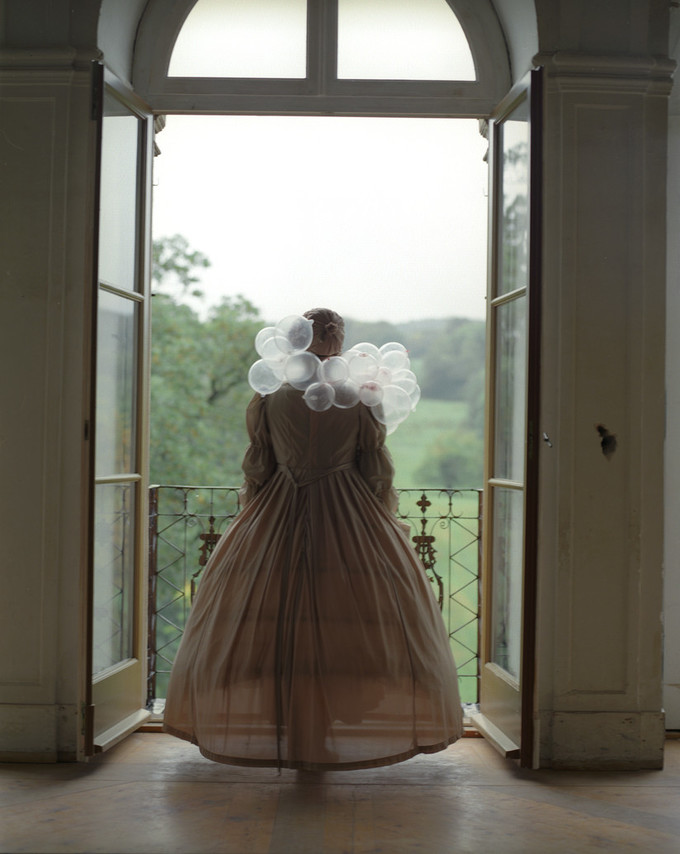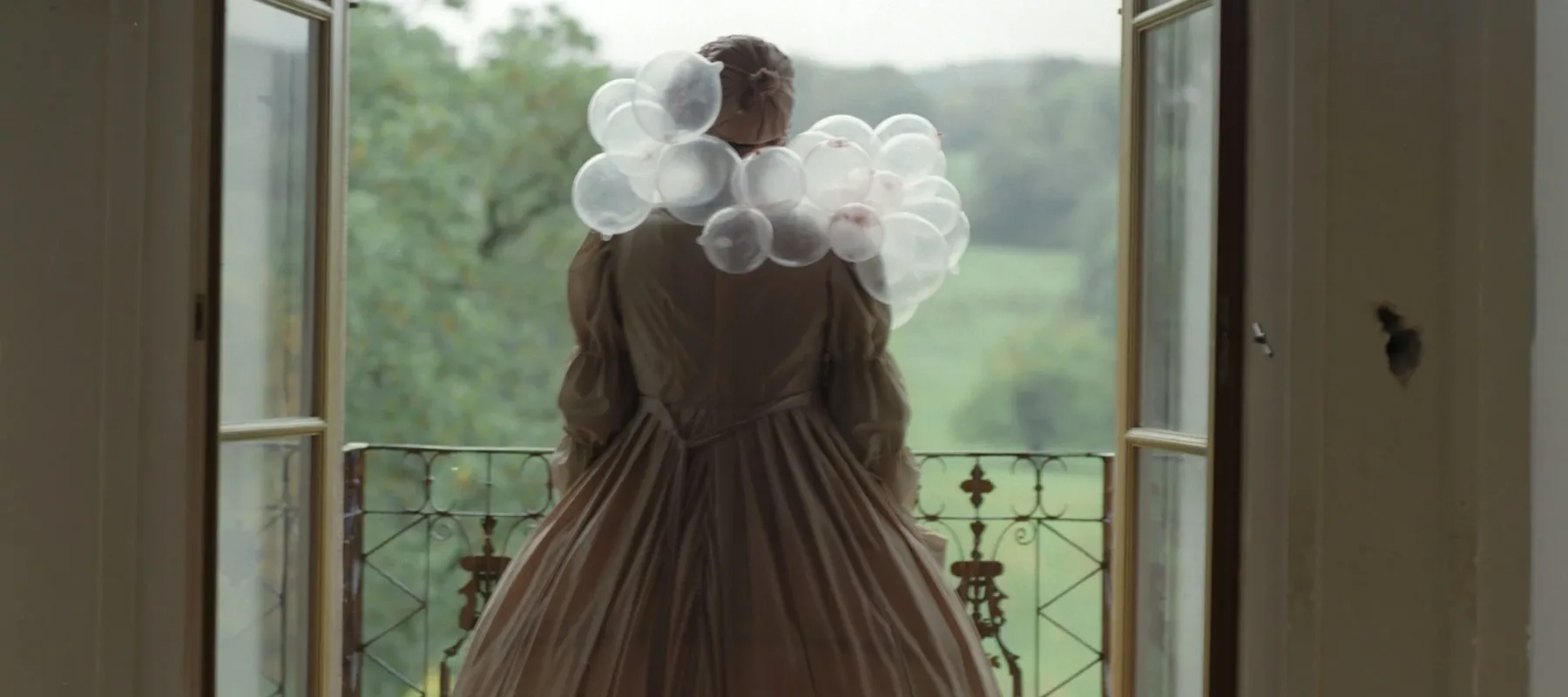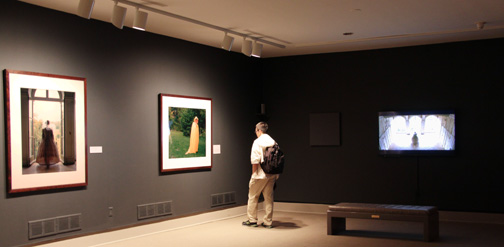Janaina Tschäpe (b. 1973, Munich) is a Brazilian-German artist who creates paintings, drawings, photographs, and video art. Inspired by landscapes of the Amazonian rainforest in Brazil, as well as tales from the Romantic era of 19th-century Germany, she orchestrates images of cumbersomely costumed women placed in dramatic settings for videos and photographs.

The artist’s first name, Janaina, refers to the Afro-Brazilian queen of the ocean, goddess of the sea, evolved from Yemanja of Yoruba religion. The artist identifies with her namesake by including a form of water in many of her projects, like Aquatica (2014), The Ocean Within (2013), Blood Sea (2004), and The Moat and the Moon (2003). Currently on view in Total Art: Contemporary Video, Tschäpe’s Lacrimacorpus dissolvens (2004) alludes to the story of a sad, self-loathing mythical creature that also behaves according to its name, dissolving in a pool of its own tears.
The short video features a female figure dressed in period costume from Goethe’s Faust.² Covered head to toe in swaths of beige fabric flowing over a large hoop skirt, the woman’s face and hands are also completely hidden by a hooded bonnet and extra-long sleeves. But the most unusual element of the ensemble is an unwieldy inflatable-teardrop collar encircling her neck.
Set to a careening piano melody, the woman spins in circles inside the weathered, abandoned room of a palace in Weimar, Germany, a hub of the German Enlightenment as well as the site of Nazi concentration camp Buchenwald. The sound of a turning crank opens the video, with a Rückenfigur¹ gazing out the window toward the gardens. Soft piano music begins to play, and the woman turns slowly in circles with a melancholic lilt. As the tune reaches a forceful tempo and crescendo, the woman also picks up speed and intensity.
Uneven centripetal forces (and dizziness) eventually send her off balance until she melts slowly to the ground onto her back, arms spread wide as if crucified, exhausted, dissolved. Not the willful, skilled performance expected from the typical music-box ballerina, the woman’s repetitive, hypnotic “dance” seems compelled by a force unseen. The video plays on a loop, the woman stuck forever in this dizzying pattern of helplessness. Does she feel implicated in the horrific events that have occurred there, permanently tied to the trauma and shame? Does the loss of agency and burdensome sorrow represent an experience of 19th-century womanhood?
Accompanied by production stills from the shoot, the inclusion of Lacrimacorpus dissolvens in Total Art represents an instance in which the artist is in control of more than one medium. Tschäpe makes decisions not simply as the artist, but also as director, costume designer, choreographer, sound editor, and videographer. While the woman in the video may not have authority over her situation, Tschäpe carefully crafts an image of a character lost in a physically altering state of grief.
To learn more about the artist and Lacrimacorpus dissolvens, visit the museum for a short conversation with Curatorial Assistant Stephanie Midon on Wednesday, July 30 at noon, or attend Tschäpe’s talk at NMWA on September 19.
Notes:
1. Figure shown with back to the viewer, alluding to landscape imagery made popular during the period of German Romanticism by painter Caspar David Friedrich in the 19th century.


